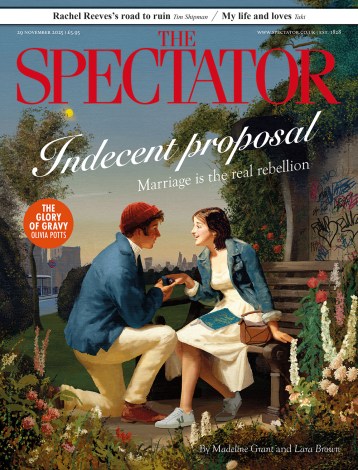Tennyson’s poem ‘Mariana’ has gone everywhere in the world since 1830. A professional scholar in Uruguay, Papua New Guinea or New Haven, Connecticut, reading the lines ‘Weeded and worn the ancient thatch/Upon the lonely moated grange’ might want to ask a few questions. Do English houses ever have moats? (Yes — Ightham Mote and Madresfield Court are famous examples.) Can we find houses with a humble thatch and also a moat? (A harder question – Tennyson’s poem set a vogue in landscape design as well as poetry.) Or, taking a different tack, where does the use of the word ‘moat’ as a verb come from? (Easy — ‘moated grange’ is from the poem’s subject, Measure for Measure.) What sort of word was it by 1830? (Harder — it comes up in translations with a taste for the archaic, and technical descriptions of architecture. Is it picturesque in a way that Shakespeare’s use isn’t?) These are interesting questions that might lead to some kind of enlightenment.
This is what Bloom has to say about it:
An English country house with moat seems rather singular. Doubtless they exist, though I have never seen one. Mariana’s grange and moat are Shakespeare’s in Measure for Measure, but only the line used as epigraph seems relevant.
Lazy, solipsistic, vague and plain wrong, this sums up the problem with Bloom’s criticism. There may be those who want to read about what Bloom didn’t know and couldn’t be bothered to find out, but I don’t believe their main interest is in literature.
Harold Bloom, who died last year at 89, was an American literary critic and an academic at Yale. He came from a very humble background, and English was only the third language he learned in childhood, after Yiddish and Hebrew. He succeeded at Cornell and Yale, despite the often savage anti-Semitism of universities at the time — Yale informally restricted the number of Jews to 10 per cent of the student body until the 1960s. He taught there from 1955 almost to the day he died, an undoubted inspiration to generations.
A critic who has no particular relish for words, or who can’t explain his relish, is not going to detain us long
He was a very prolific writer, producing four dozen books. Some of them are pretty cranky, including works of Biblical textual criticism and a novel. His principal contributions are a theory of the way influence works between writers, and a spirited, reactionary defence of the traditional Western canon. In later years he was repeatedly accused of groping his female students — only worth mentioning because in the nervous minds of American universities, sticking up for the merits of dead white men such as Shakespeare, Milton and Wordsworth and molesting your graduate students started to seem much the same thing.
Bloom’s theory of influence is a strikingly Freudian one. In it, a writer is ignited by love for their greatest predecessors, then driven by resentment to ride roughshod over that legacy. There are ‘strong’ misreaders, who write something new through violent misprision, and ‘weak’ ones, who just repeat the predecessor. It’s an appealing model, but inadequate to the reality. It leaves out the minor writer who does something quite new — Anna Kavan or Henry Green — and the possibility of a major writer of orthodox, classical technique.
It also neglects the truth that writers don’t only read their greatest predecessors. The Magic Mountain starts from two of the worst genres in German literature, the spa romance and the tawdry Bildungsroman, and transforms them. The principal source of Othello is actively embarrassing to read. Bloom’s defence of the traditional canon is not that helpful, in reducing the landscape to a very few peaks, glimpsed above impenetrable clouds.
Literary critics can do one of two useful things. They can set works of literature in their historical context — what their authors meant, what their readers understood, how they were produced and so on. These are always rich and difficult questions. Secondly, they can explain what the substance of the work is by talking about the words. A critic who has no particular relish for words or sentences, or who can’t explain his relish, is not going to detain us long.
Take Arms Against a Sea of Troubles is rather curiously named; that’s Hamlet’s phrase for suicide, after which your career as a reader is usually over. It consists of 16 chapters about 19 dead white men. The title is not much of a guide to any over-arching argument. The indexer, who must have been challenged, has had his or her revenge: ‘Bloom, Harold’ occupies the longest entry, three full columns.
It gets us a certain distance. Bloom quotes generously from his poets, but he can’t explain verbal effects. For instance, he writes of the line ‘Sling him fast like a hog to scorch’ that it is ‘the purest Browning’, and asks: ‘What is the aesthetic gratification that this poem affords us?’ He might have pointed out that the line consists of eight monosyllabic words of the utmost Germanic antiquity (quite an easy point), but instead, this is his account:
Partly it is Browning’s diction [what about it?]; partly his inventiveness at fresh metrics [rubbish, Browning has just inverted a couple of feet in his otherwise ordinary iambic tetrameter]; mostly heroic verve. We sense his pleasure as he mouths the madness of a public burning and its flowering climax… I wonder if Gerard Manley Hopkins had read this poem.
None of this gets us any further, and quite a lot of it doesn’t mean anything. It is just Bloom talking loudly over Browning.
He offers the occasional elucidation, but is frequently wrong. He quotes lines from Prometheus Unbound on
the ‘fire that is not brightness’, dark flame rising like the duende of the poet’s breath-soul from the abyss now yielding a secret, tempers not only the air but the onrushing sound of the chariot that is no longer a vehicular form of divinity but of the human.
This fails a cardinal rule of exegesis by being not only much harder to understand than Shelley’s lucid lines, but explaining something that isn’t there. Shelley’s fire isn’t in an abyss: it’s in the eyes of a ‘winged infant’. I don’t know whether this is a strong or a weak misreading. I think it’s just wrong. And if a critic can’t get something local and lucid right, what trust do we have in his larger formulations: ‘The greatest poetry… transfigures rhetoric into forms of life [how?] and hence loss [why?].’ We certainly don’t have any faith in his judgments.
The truth is that Bloom was really only interested in what literature means, and ultimately what it meant to him, rather than what it is. This leaves rather a lot out. He couldn’t do anything with comedy. The idea that a gossamer master of pure verbal fantasy such as Wodehouse or Elmore Leonard might be a better novelist than 1,000 forgotten prize-winning doomsters is alien to him. He records, and deplores, Auden saying that Shelley’s line about poets being ‘the unacknowledged legislators of the world’ was ‘the silliest remark ever made about poets’. Of course Auden was right. Poetry doesn’t legislate; it is not a proposal; it can be about nothing at all, or it can recommend something quite awful, such as Rochester’s heroine having sex with a pig.
Bloom was the product of a Great Books culture which promoted literature as ennobling and morally upright; of course, writing about Byron, he can finish up by talking of his ‘last mad passion for his teenaged Greek page… who raked in the infatuated poet’s considerable wealth while declining to yield up his body to Byronic bum-buggery’. If that’s your attitude, what are you going to do with the glorious ‘Beppo’, finishing up with the wife and her two husbands in a strongly implied three-way ménage? Talk about borrowings from Paradise Regained, I suppose.
No one is going to base a claim for Bloom’s merits on this final book. But it does indicate, with painful acuity, that the critic may have had little understanding of how literature is made — which is not out of ideas, as Mallarmé patiently explained to Cézanne. It doesn’t achieve its effects by saying ‘this is funny’ or ‘this is so moving’. It relishes its own voice — and to dwell on what it has stolen from others misses its ambition.
Bloom spent his life talking about literature to a captive audience, and at the end it looks to me as if he missed the point, saying with grandiose but comic insufficiency of evidence that Yeats’s ‘Under Ben Bulben’ is ‘of a badness not to be believed’. Well, that was Yeats’s last word, and this is Harold Bloom’s. I wonder — as Ronald Firbank used to say when he heard something unusually absurd.






Comments